Test Pit 22 - Meldreth Manor School
The Finds
The pottery from this test pit included two sherds of Glazed Red Earthenware dating to the post-medieval period and 40 Victorian-era sherds.
Other finds included nails, fragments of clay pipe, tile, daub, glass, coal, slate and a button. The faunal assemblage included four unidentifiable bones of mixed sizes.
Located on land in the gap between the main southern cluster of village houses and the Church to the north, the pottery finds from this pit indicate that the area has largely remained unoccupied or functioned as fields until the 19th century. While other pits in this area indicate the use as fields since the Roman period (see test pits 4, 15 and 26), this pit has no evidence for activity until around the 16th century. It is also clear that disturbance during the Victorian period was more intense in the area around test pits 4 and 22, which is clearly related to their functions respectively as a public house and as a school.
The finds from this pit contribute towards the emerging picture suggesting that a gap of open fields existed for much of the last 2,000 years between the main village core and the village church, the latter of which also has two moated manorial sites near to it.
For an overview of the site and finds, please click on the image of the exhibition poster which is the first image in the gallery below.
For detailed analysis of the finds, please see the results sheet for this pit, which is available as a download at the bottom of this page.
For reports and maps relating to all of the test pits, please see the documents available on our results page.
Site Diary (the pit was dug on one day only)
Members of Meldreth Local History Group dug a test pit at Meldreth Manor, a Scope school in 2013 for disabled children and young people. The site we chose for the pit was on the lawn to the south of the manor house, a late seventeenth century Grade II listed building. We had high hopes that the pit would reveal a lot about the history of the site, but it was not to be! We found very little, and all of the pottery found was post medieval. It appears that at one time, builders’ rubble had been discarded in this location, possibly when part of the manor house was demolished. Part way through context 6, we hit a layer of stone and pebbles. We dug down a bit further but there was just clay beneath with no inclusions and no finds. We therefore back-filled the pit and neatly replaced the turf. Some of the children and young people at the school were brought by their carers to look at the pit and at what we were finding. Whilst they were unable to take an active role in the dig they appeared to enjoy the experience.
Photo Gallery
Please click on a photograph to display a larger image.



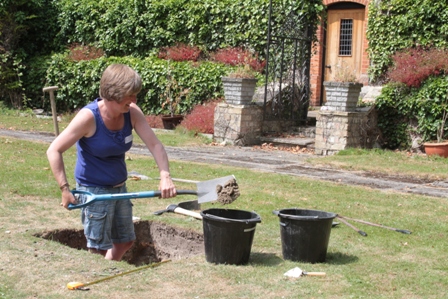
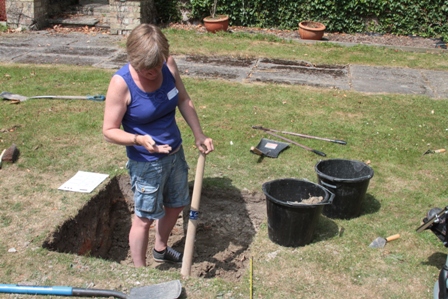



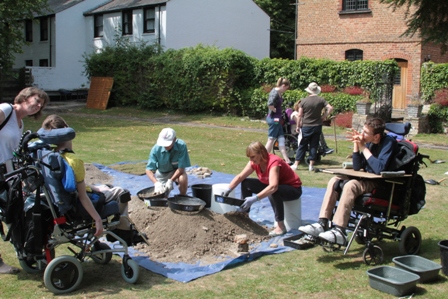


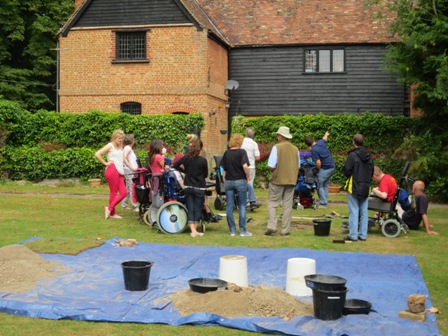



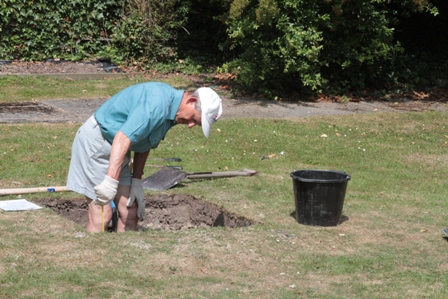


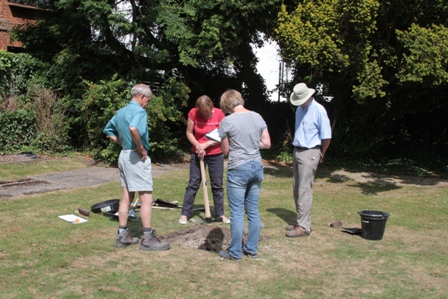
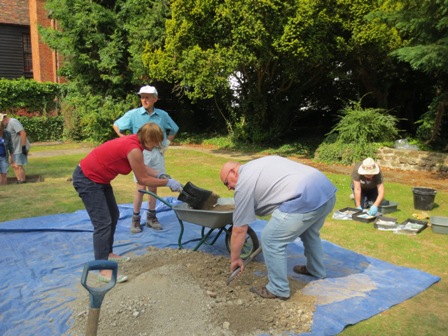

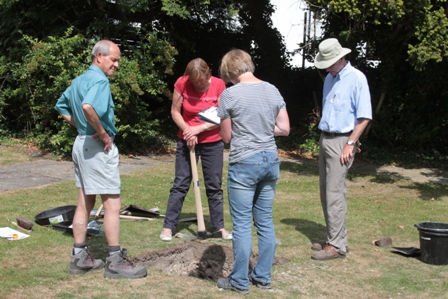






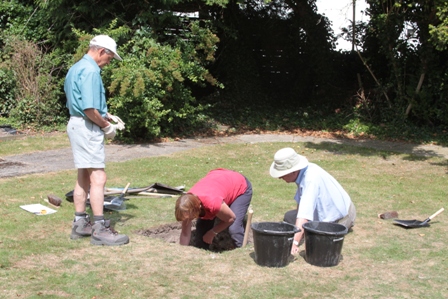


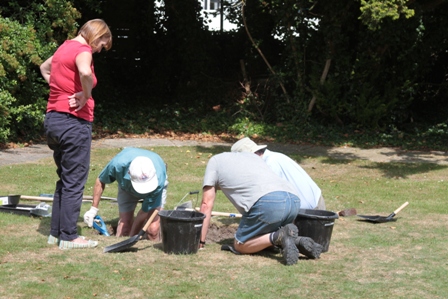


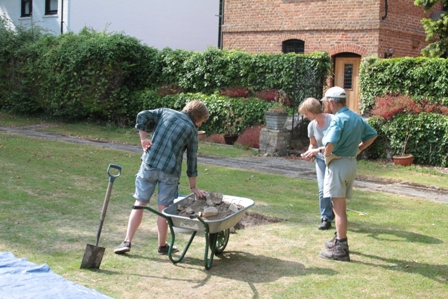

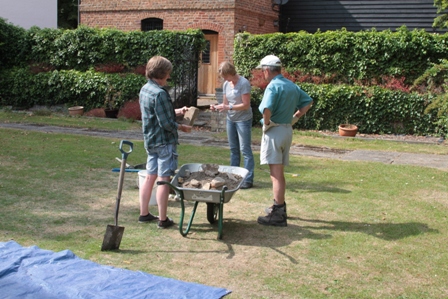







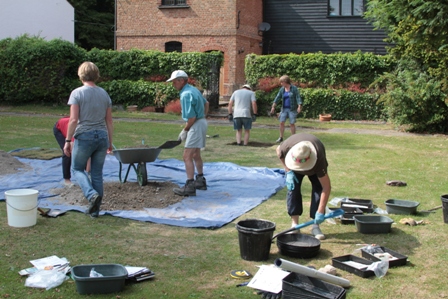
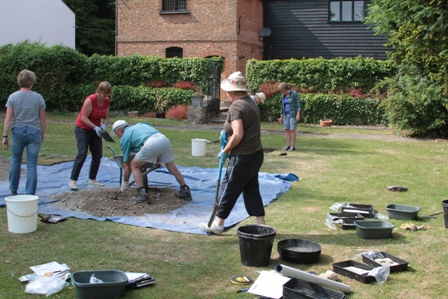


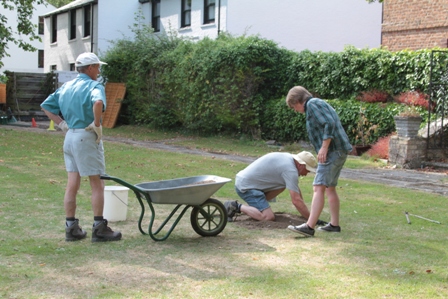






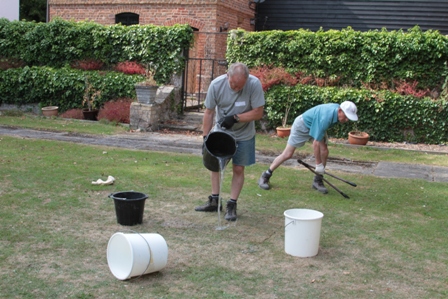
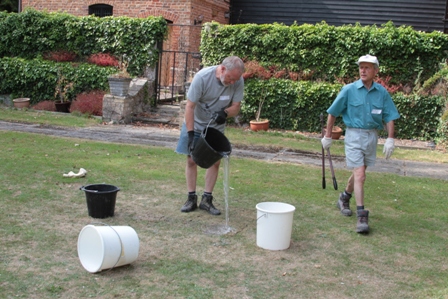

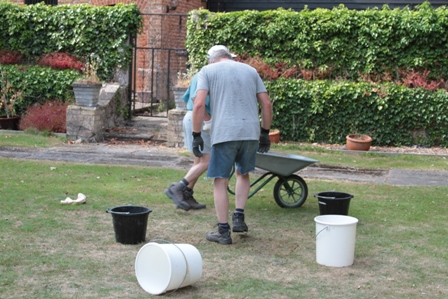










No Comments
Add a comment about this page